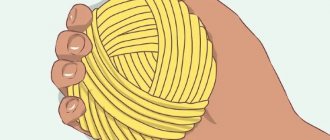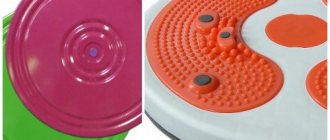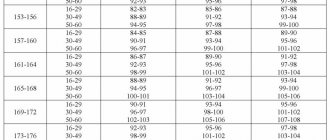Over the past decades, the average waist has been seriously spreading.
The most successful waist-to-hip ratio for women is considered to be 0.7 or less. However, in the modern world this figure is closer to 0.8. It's important to understand that a larger waist doubles your risk of premature death from all causes. Every extra 5 cm around the waist increases the risk of premature death by 13% in women and 17% in men. Dr. Andrey Beloveshkin about indicators that can be measured independently.
We only need a measuring tape and a telephone (calculator). Yes, I remind you again that it is not excess weight in itself that is harmful, but internal (abdominal, visceral) fat. At risk are some people with a completely normal overall height-to-weight ratio, but with a large waist circumference. Twin studies have shown that in 22-50% of cases, the waist-to-hip ratio can be explained by genetic factors.
Among other factors, the first places are occupied by nutrition and lifestyle.
Waist circumference (centimeters).
The normal waist circumference for women is 80 centimeters (this is the upper limit, which should not be exceeded), women with a smaller circumference can only rejoice, because they have a normal weight, when the circumference ranges from 80 to 88 centimeters - this is a slight increase in weight, over 88 - obesity.
In general, women with thin waists are more attractive to the opposite sex. An ideally proportioned woman should have a waist-to-hip ratio of approximately 0.7 (more precisely, between 0.60 and 0.72).
For men, normal parameters are up to 94 centimeters, from 94 to 102 – weight gain, and more than 102 – a threat, that is, obesity. These people have an increased risk of dying from heart disease and cancer.
Statistics are given: in men with a waist circumference of at least 100 cm, the mortality rate is 50% higher than in those whose waist circumference was less than 89 cm. The researchers gave the example of a man with a height of 178 cm. If such a person has a waist circumference of 107 cm, his life may be reduced by 1 year and 7 months. Even with normal weight, a large waist size affects life expectancy.
Height to weight ratio values
Deviations in weight to a lesser extent indicate deficiency, and to a greater extent indicate obesity. Both conditions are dangerous and can cause irreversible changes.
If you are too thin, your internal organs become vulnerable: fatty tissue protects them from external influences.
The body also extracts energy from it, so if there is a lack of fat, activity decreases.
Other problems caused by lack of mass:
- Violation of thermogenesis - the ability to maintain body temperature. Constant weakness and chilliness appear.
- Decreased immunity. People who are too thin often get sick.
- Problems with fertility.
- Deterioration of skin condition, early appearance of wrinkles.
- Anorexia is a lack of appetite when the body needs food. Protein-energy deficiency develops. It causes irreversible changes, the result of which is death.
Excess fat is no less dangerous. Extra pounds primarily affect the functioning of the heart and blood vessels. The risk of such pathologies increases:
- diabetes mellitus;
- coronary heart disease;
- high blood pressure;
- myocardial infarction or cerebral stroke.
Waist-hip circumference index. WHR (waist-hip ratio).
Waist/hip ratio. Waist circumference is measured at the level of the navel. Pelvic circumference is measured at its widest point. Normally, this index is less than 0.85 for women and less than 1.0 for men. If a person has abdominal-visceral obesity, he or she has a WC/TB ratio of more than 0.85 in women and more than 1.0 in men (Stern et al., 1995). Hip circumference is measured below the greater femoral tuberosities.
According to the World Health Organization (WHO) protocol, waist circumference should be measured midway between the lower edge of the lower rib and the top of the iliac crest (the upper pelvic bone, seen from the side). A measuring tape is used for this. When tightened, it should create a pressure equivalent to 100 grams. Hip circumference should be measured around the widest part of the buttocks, using the same tape, parallel to the floor.
The US National Institutes of Health and the National Nutrition Examination Program use results obtained by measuring at the top of the iliac crest—essentially where we typically have the waistband of standard pants.
Often, non-professionals measure the waist at the level of the navel, but studies have shown that this method can often result in an understatement of its actual circumference.
When measuring both circumferences, a person should place his feet side by side, arms apart, body weight evenly distributed, and there should be no excess clothing. Breathing should be normal, calm, and measurements should be taken at the end of exhalation. Each measurement is repeated twice, and if there is a centimeter difference between them, then the average results are taken.
In practice, in order not to delve into all these subtleties, the waist with a slender figure is most correctly measured simply in the area of its smallest circumference, as a rule, slightly above the navel. In cases where the waist is convex rather than concave, for example, as happens during pregnancy or when you are overweight, the location of the smallest circumference is often more difficult to determine. In such cases, to determine the degree of obesity, a measurement is taken a couple of centimeters above the navel. Hip circumference can be measured simply visually at the widest part of the buttocks.
Some aspects of the waist and health
Literature
- Cameron AJ et al. The influence of hip circumference on the relationship between abdominal obesity and mortality //International journal of epidemiology. – 2012. – T. 41. – No. 2. – pp. 484-494.
- Mørkedal B., Romundstad PR, Vatten LJ Informativeness of indicators of blood pressure, obesity and serum lipids in relation to ischemic heart disease mortality: the HUNT-II study //European journal of epidemiology. – 2011. – T. 26. – No. 6. – pp. 457-461.
- Romaguera D. et al. Food composition of the diet in relation to changes in waist circumference adjusted for body mass index //PloS one. – 2011. – T. 6. – No. 8. – P. e23384.
- Singh D. Female mate value at a glance: Relationship of waist-to-hip ratio to health, fecundity and attractiveness //Neuroendocrinology letters. – 2002. – T. 23. – No. Suppl 4. – pp. 81-91.
- Son YJ et al. Association of waist-height ratio with diabetes risk: a 4-year longitudinal retrospective study //Endocrinology and Metabolism. – 2016. – T. 31. – No. 1. – pp. 127-133.
- Zhang C. et al. Abdominal obesity and the risk of all-cause, cardiovascular, and cancer mortality //Circulation. – 2008. – T. 117. – No. 13. – pp. 1658-1667.
Character.
Women with a wider waist are characterized by “masculine behavior.” Visceral obesity is associated with an increase in testosterone. And for men it’s the opposite. According to Cashdan, in countries where women occupy a subordinate position in economic terms (Japan, Portugal, Greece), thin waists are more common among local residents. In countries with pronounced gender equality (Denmark, Great Britain) the situation is exactly the opposite.
Wraps
Today, the popularity of spa treatments is rapidly increasing. You can pamper yourself not only in the salon, but also at home. Before wrapping, you must thoroughly scrub the skin with a scrub made from honey, ground coffee or sea salt. Then prepare a mixture of the following ingredients of your choice:
- a mixture of black clay and ground red pepper;
- mustard with olive oil.
Next, we apply it to the waist, wrap it in cling film, cover ourselves with a warm blanket and rest for an hour. After the time has passed, the film must be unrolled and the mixture thoroughly rinsed with water. After the procedure, it is recommended to apply nourishing lotion or body cream to the skin.
Reproductive health.
Women with thin waists enjoy better health. In addition, they are less likely to suffer from infertility and chronic diseases of the reproductive system. Therefore, a low WHR indicates good health and fertility. A recent study found that in vitro fertilization was more successful in women with a WHR between 0.70 and 0.79 than in women with a WHR greater than 0.80. Women who do not have a waist are more likely to have problems conceiving.
Studies have shown that if the female body secretes too little estrogen, then the notorious coefficient (0.7), as a rule, exceeds the norm. And if you compare a woman whose coefficient is 0.9 with a woman whose coefficient is 0.8, then the first one is one third less likely to get pregnant. By the way, in those areas of the planet where ideas about beauty differ from the Euro-American standard, the ratio of waist to hip sizes also approaches the above-mentioned coefficient. Thus, in a number of African countries, men prefer plump women with wide hips, respectively, with sizes of 100 and 135 centimeters. And now - 100: 135 = 0.74. Be patient! The main thing is that the waist is noticeably narrower than the hips.
Formulas for ideal female body proportions
Oddly enough, there is no formula for ideal proportions of the female body. Or perhaps it was intended by nature itself that achieving this perfection, applicable to absolutely all women on the planet, is impossible and illogical. After all, then everyone should be similar to each other, like clones, with only minor changes in parameters. But all women are unique, each of them is one of a kind. Therefore, searching for ideal female proportions is irrational.
Ideal female proportions are those given to everyone at birth. For a girl, the body and figure are only a shell in which inimitable attractiveness and grace are stored.
But it is important to note that you need to take care of your figure in order to maintain natural beauty and fill your body with health. And this means leading an active and healthy lifestyle.
Determining your relationship to one of three physiological body types helps you learn more about your body type:
An ectomorph is easy to distinguish - below average weight in proportion to height, skinny build. He tends to have a high metabolism, so eating large amounts of food does not cause weight gain.
- low percentage of subcutaneous fat;
- narrow constitution;
- narrow hips, collarbones;
- small joints (wrist/ankles);
- string abdominal muscles;
- long upper and lower limbs;
- small breasts and buttocks;
- hyperactivity;
- difficulty gaining muscle mass.
- Mesomorph.
Mesomorph - physiological indicators average between ectomorphic and endomorphic types, reflects the qualities of both. Has the ability to quickly gain muscle mass and additional weight. Has a larger bone structure than endomorphs, but the percentage of body fat is similar to the ectomorph type.
- wide collarbones and shoulders;
- symmetrical constitution;
- slim waist;
- long, round abdominal muscles;
- low fat percentage;
- big muscles.
- Endomorph.
The endomorph body type is considered the complete opposite of the ectomorph. It is bulkier in appearance, has a small percentage of muscle mass, but a high ratio of fat.
- enlarged chest;
- wider/thicker joints;
- hips wider than collarbones;
- short limbs;
- a large amount of fat;
- large skeleton;
- low muscle score due to adipose tissue;
- frequent fatigue;
- insatiable appetite.
The ratio of height and leg length
For most men, female height and ideal leg length are not a determining factor in the attractiveness of the opposite sex. If a girl does not have long model legs, then there is no need to give in to despair. As many men as there are, there are so many opinions about ideal beauty and the female figure. Some people like petite ladies, while others are seduced by the gracefulness of tall ladies.
There is a table to measure the ratio of height and leg length:
Higher mental abilities.
Research has also shown that women with large differences between their waist and hip measurements have especially sharp minds. Accordingly, the greater the difference between a woman’s hips and waist, the better her cognitive performance.
In their study, scientists examined the abilities of 16 thousand girls and adult women and came to the conclusion that more curvaceous representatives of the fair sex demonstrate better results on mental tests. The reason lies in the fatty acids that accumulate in the thighs. It is in this part of the body that the highest concentration of Omega-3 acids is observed, which improve the mental abilities of a woman during pregnancy and her unborn baby.
Nutrition
In order to get rid of accumulated fat in the waist area, you should first normalize your diet. Nutritionist advice is as follows:
- Overeating must be avoided. The weight of one serving should be no more than 200 grams.
- The diet should be fractional. Proper nutrition means eliminating the feeling of hunger, so you should eat 5-6 times a day, but do not forget about the maximum serving size.
- To speed up the process of reducing your waistline, you should give up fried, salty and smoked foods, as well as flour, sweets and processed foods. Fast carbohydrates should also be excluded from the diet, as they tend to quickly turn into fat folds at the waist. It is worth noting that even alcohol and smoking have a negative impact on your figure, since tobacco smoke accelerates aging and slows down metabolism, and alcoholic drinks remove healthy water from the body.
So what food is suitable for a beautiful waist? Please note the following:
- Eating a lot of greens and vegetables will give the body a large amount of fiber and vitamins.
- Don’t forget about fruits and berries, which help saturate the body with vitamins and keep it in good shape. The most beneficial fruits for your figure will be citruses, watermelons, pears, apples, pineapples, melons, raspberries, strawberries, gooseberries, and currants.
- Protein foods are important to maintain muscle tone. Therefore, it is necessary to eat lean meat, fish or seafood every day.
- By drinking two liters of still water every day, we help remove toxins and waste from the body, start metabolism and satisfy the feeling of hunger.
Cardiovascular health.
Waist size quite reliably indicates an increased risk of hypertension, diabetes and high cholesterol. Studies have confirmed that health risks begin to increase if a woman's waist reaches 80 centimeters; at 89 centimeters it increases significantly. For men, the risk increases from 94 centimeters. Then we will talk about adjusting for height, because these are relative figures, and they are not suitable for people who are too tall or too short, for children, and also for representatives of some ethnic groups. For example, among the Japanese, the risk increases sharply if the waist size in men reaches 85 centimeters, and in women - 90 centimeters. The risk of stroke is increased sevenfold.
Physical activity
If you want to become the owner of a thin and elegant waist, then you cannot do without exercise.
Rotating the hoop will help get rid of sinister sides and reduce the volume in the waist. You should devote at least forty minutes a day to this activity.
Raising your legs helps work your lower abdominal muscles. To do this, you need to lie on the floor, spread your arms to the sides. Then close your legs together and lift them smoothly until an angle of ninety degrees is formed with your body. You need to stay in this position for five seconds and slowly return to the starting position. The exercise is repeated at least fifteen times.
The well-known side bends contribute to the rapid elimination of fat in the waist area. Despite the ease of implementation, this exercise is very effective.
Cancer.
A study published in the Archives of Internal Medicine found that it also increases the chances of dying from cancer, respiratory failure and other causes. After all, a large waist circumference indicates an excessive amount of fat around the abdominal organs. And this is usually associated with inflammation, high cholesterol, risk of diabetes and other problems.
By measuring your waist using a tape measure, you can determine whether you are at risk. The norm is 90 cm for men and 75 cm for women. Regarding overweight people, the conclusion of American scientists is this: extra 30 cm in men and 32 cm in women doubles the risk of death. As for women with normal weight, the research results are completely stunning. Every extra 10 cm in the waist increases the likelihood of acquiring a fatal disease by about 25%.
What is BMI
Body mass index helps determine your tendency to be overweight. The indicator does not reflect how fat is distributed in the body or its amount, since the calculation does not take into account overall body composition.
A sick person may have a normal BMI, while a healthy person may have an elevated one, which is why he falls into the “obese” category. This often happens with athletes.
The BMI formula is more suitable for average height (men - 168-188 cm, women 154-174 cm). Shorter people, to get their weight, must subtract 10%, tall ones - add the same amount. In addition, this formula can “lie” when measuring athletes.
However, BMI is a relatively accurate measure of how obese or underweight you are. The calculation formula is simple:
BMI = weight (kg) / height (m2)
The interpretation is:
| Meaning | Index | |
| mass deficit | less than 16 | |
| low weight | 16-18,5 | |
| norm | 18,5-25 | |
| pre-obesity | 25-30 | |
| Obesity | above 30 | |
| 1 tbsp. | 30-34,99 | |
| 2 tbsp. | 35-39,99 | |
| 3 tbsp. | more than 40 | |
Cancer in hormonal-dependent organs (breast and prostate).
The accumulation of fat deposits around the waist over a lifetime is directly linked to an increased risk of breast cancer after menopause, British researchers have found. Statistical analysis showed that the rate of increase in skirt size between 25 and 55 years of age is a clear indicator of the risk of developing the disease later in life: increasing waist circumference by one size every ten years increases this probability by 33 percent, and by two sizes increases this probability by 77 percent. .
Research shows that women whose WHR remains in the 0.7 range have optimal estrogen levels and are less susceptible to diabetes, cardiovascular disease and genital cancer. Men with a WHR of approximately 0.9 have good potency. These men have a low risk of developing prostate cancer.
Formulas for ideal female body proportions
Oddly enough, there is no formula for ideal proportions of the female body. Or perhaps it was intended by nature itself that achieving this perfection, applicable to absolutely all women on the planet, is impossible and illogical. After all, then everyone should be similar to each other, like clones, with only minor changes in parameters.
Determining your relationship to one of three physiological body types helps you learn more about your body type:
- Ectomorph.
An ectomorph is easy to distinguish - below average weight in proportion to height, skinny build. He tends to have a high metabolism, so eating large amounts of food does not cause weight gain.
Characteristics:
- low percentage of subcutaneous fat;
- narrow constitution;
- narrow hips, collarbones;
- small joints (wrist/ankles);
- string abdominal muscles;
- long upper and lower limbs;
- small breasts and buttocks;
- hyperactivity;
- difficulty gaining muscle mass.
- Mesomorph.
Mesomorph - physiological indicators average between ectomorphic and endomorphic types, reflects the qualities of both. Has the ability to quickly gain muscle mass and additional weight. Has a larger bone structure than endomorphs, but the percentage of body fat is similar to the ectomorph type.
Characteristics:
- wide collarbones and shoulders;
- symmetrical constitution;
- slim waist;
- long, round abdominal muscles;
- low fat percentage;
- big muscles.
- Endomorph.
The endomorph body type is considered the complete opposite of the ectomorph. It is bulkier in appearance, has a small percentage of muscle mass, but a high ratio of fat.
Characteristics:
- enlarged chest;
- wider/thicker joints;
- hips wider than collarbones;
- short limbs;
- a large amount of fat;
- large skeleton;
- low muscle score due to adipose tissue;
- frequent fatigue;
- insatiable appetite.
| Height | Leg length |
| · from 155 to 160 cm · from 161 to 167 cm · from 168 to 174 cm · from 175 to 180 cm | 78-83 cm 84-89 cm 90-94 cm 95-100 cm |
Many women may think that breasts and hips are the first thing men notice when they pay attention to them. But this is a wrong opinion
Numerous surveys have shown that men notice these parts of a woman’s body only after her smile and eyes. And what is beautiful for one person does not arouse the interest of another. The most ideal female figure requires harmony while respecting the proportions of the waist, hips and chest.
The standards for the width of the shoulders in relation to the hips should be in equal proportion. Deviations to a smaller or larger direction should be corrected by changing diet and exercising. This will help bring harmony to a woman’s appearance.
An ideal weight is not an absolute goal for appearance or health. It is possible to look attractive across a wide range of female body types. But it is worth noting that being underweight or overweight in relation to height is associated with poor health outcomes. The main thing is to find an individual comfortable, healthy weight and try to stick to it.
| Height in centimeters | Weight in kilograms |
| 137 | 28 — 35 |
| 140 | 30 – 37 |
| 142 | 32 — 40 |
| 145 | 35 — 43 |
| 147 | 37 — 45 |
| 150 | 39 -48 |
| 152 | 41 – 50 |
| 155 | 43 — 52 |
| 157 | 44 — 54 |
| 160 | 47 — 58 |
| 163 | 49 -59 |
| 165 | 51 — 62 |
| 168 | 53 – 64 |
| 170 | 55 — 67 |
| 173 | 57 – 69 |
| 175 | 59 – 72 |
| 178 | 61 — 74 |
| 180 | 63 – 77 |
| 183 | 65 — 79 |
| 185 | 67 – 82 |
| 188 | 69 — 74 |
| 191 | 72 — 87 |
- Ectomorph.
Characteristics:
- low percentage of subcutaneous fat,
- narrow constitution,
- narrow hips, collarbones,
- small joints (wrist/ankles),
- string abdominal muscles,
- long upper and lower limbs,
- small breasts and buttocks,
- hyperactivity,
- difficulty gaining muscle mass.
- Mesomorph.
Characteristics:
- wide collarbones and shoulders,
- symmetrical constitution,
- slim waist,
- long, round abdominal muscles,
- low fat percentage,
- big muscles.
- Endomorph.
Characteristics:
- enlarged chest,
- wider/thicker joints,
- hips wider than collarbones
- short limbs,
- a large amount of fat,
- big skeleton,
- low muscle score due to adipose tissue,
- frequent fatigue,
- insatiable appetite.
What body types are there?
The constitution of a woman's body can be different. All existing physiques are conventionally divided into three categories:
- Asthenics. Distinctive features include elongated limbs and a thin neck. Growth often exceeds average. The shoulders and hips are narrow, the chest is small, and the muscles are poorly developed. Girls and women with such a physique are usually more active and can remain thin even with poor nutrition.
- Normal type. In such people, height to weight both at 18 and after 40 years is close to normal. Such people have a normal metabolism and all consumed calories are burned. The main thing is to monitor your diet to prevent uncontrolled weight gain.
- Hypersthenics. In such girls and women, the height to weight ratio is usually disturbed. The shoulders and hips are usually wide, and the limbs and neck are quite short. Such people are more likely than others to gain extra pounds.
It is not difficult to determine your type to calculate the mouth-to-weight ratio using certain formulas. Just measure your wrist:
- if its girth is less than 16 cm, you are asthenic;
- if about 19 cm - normal physique;
- more than 19.5 – you are a hypersthenic.
Massage
The simplest and at the same time effective method is pinch massage, which you can do yourself:
- Before the procedure, it is recommended to apply massage cream or oil to the sides and abdominal area.
- With the help of intense stroking it is worth warming up the muscles well.
- Then, with light but forceful pinching, you need to walk across the entire abdomen in a clockwise direction. As a rule, the skin in this area is quite elastic, so you should not be afraid of stretching it. However, there is no need to hurt yourself and pinch yourself until you bruise.











